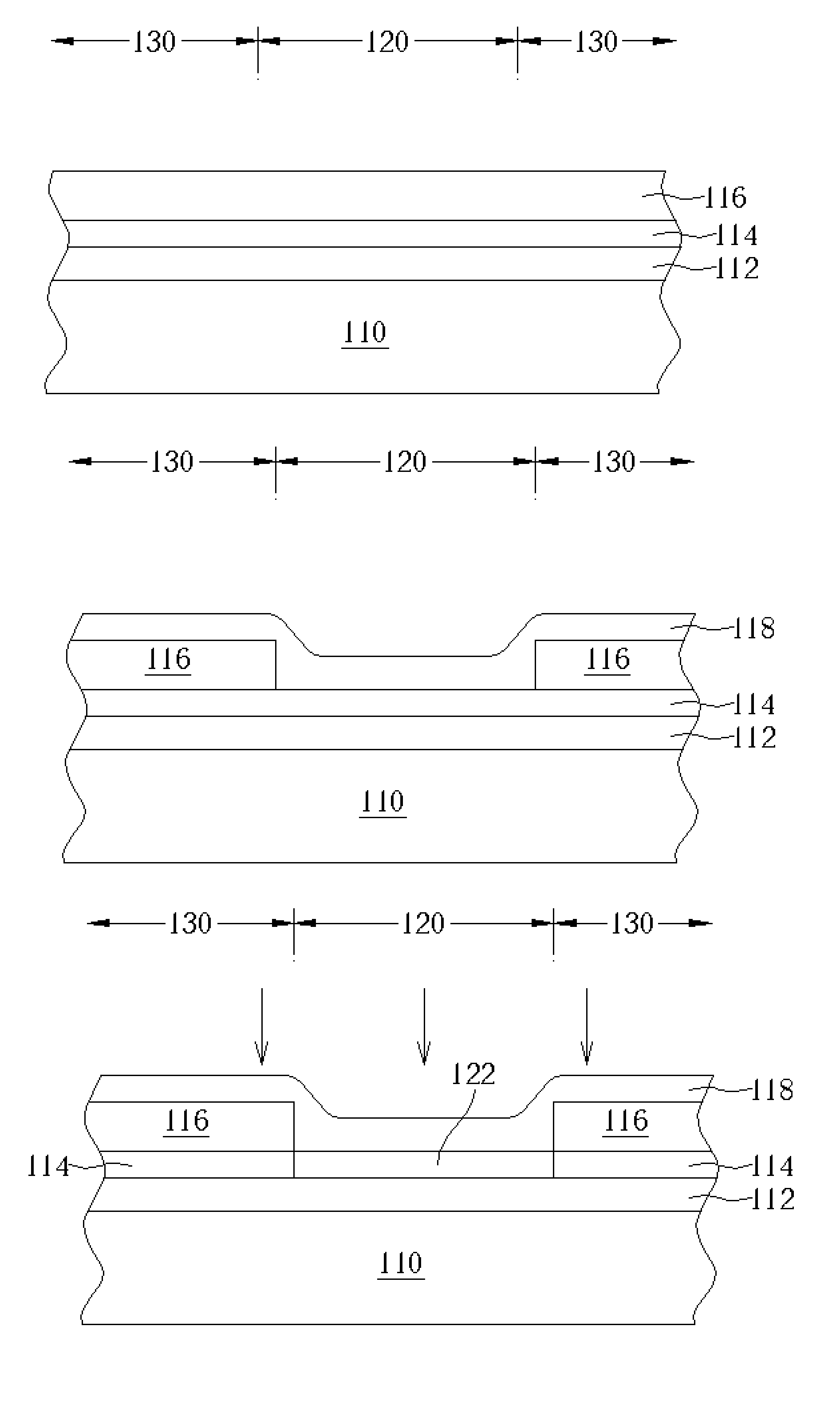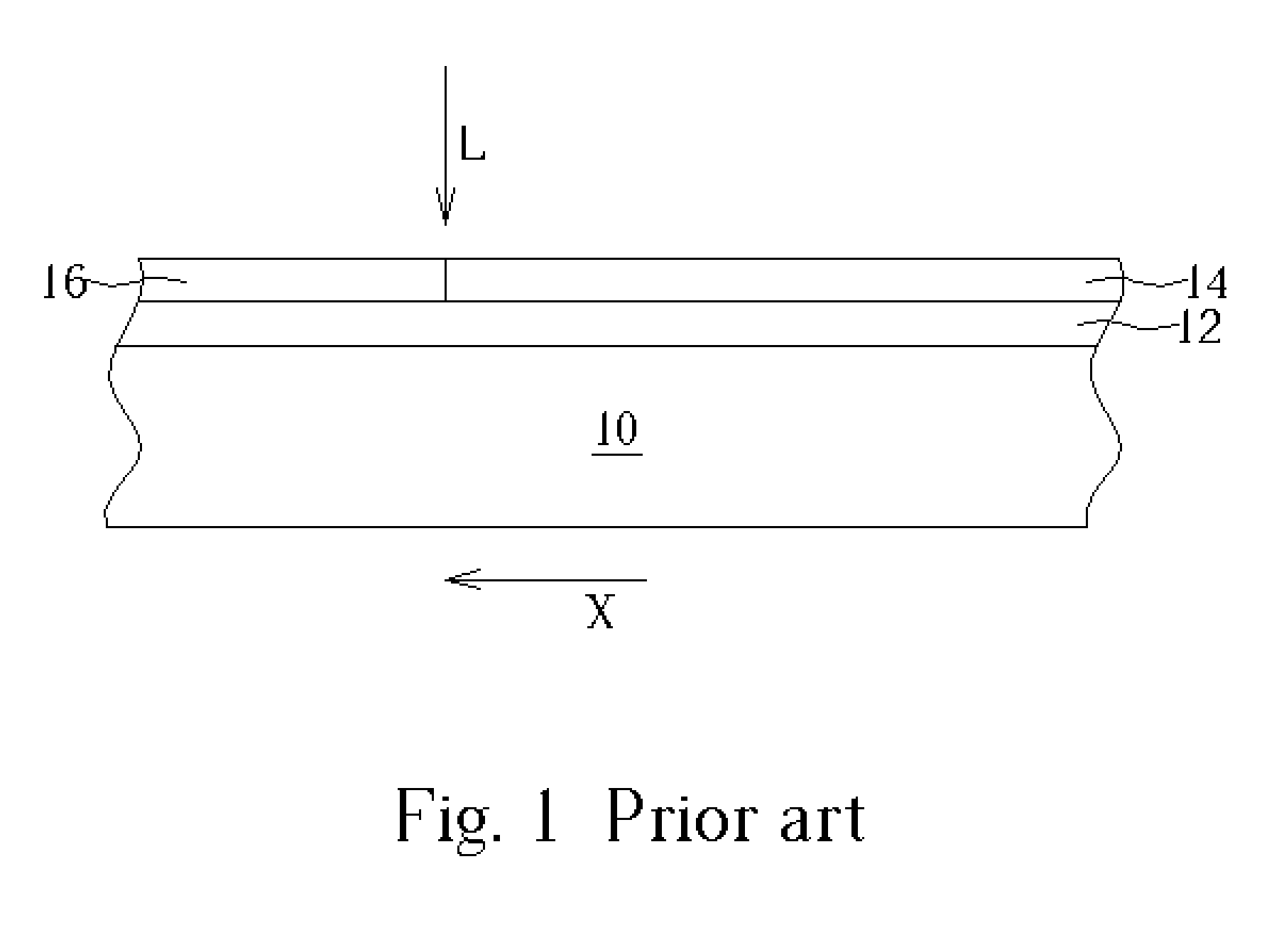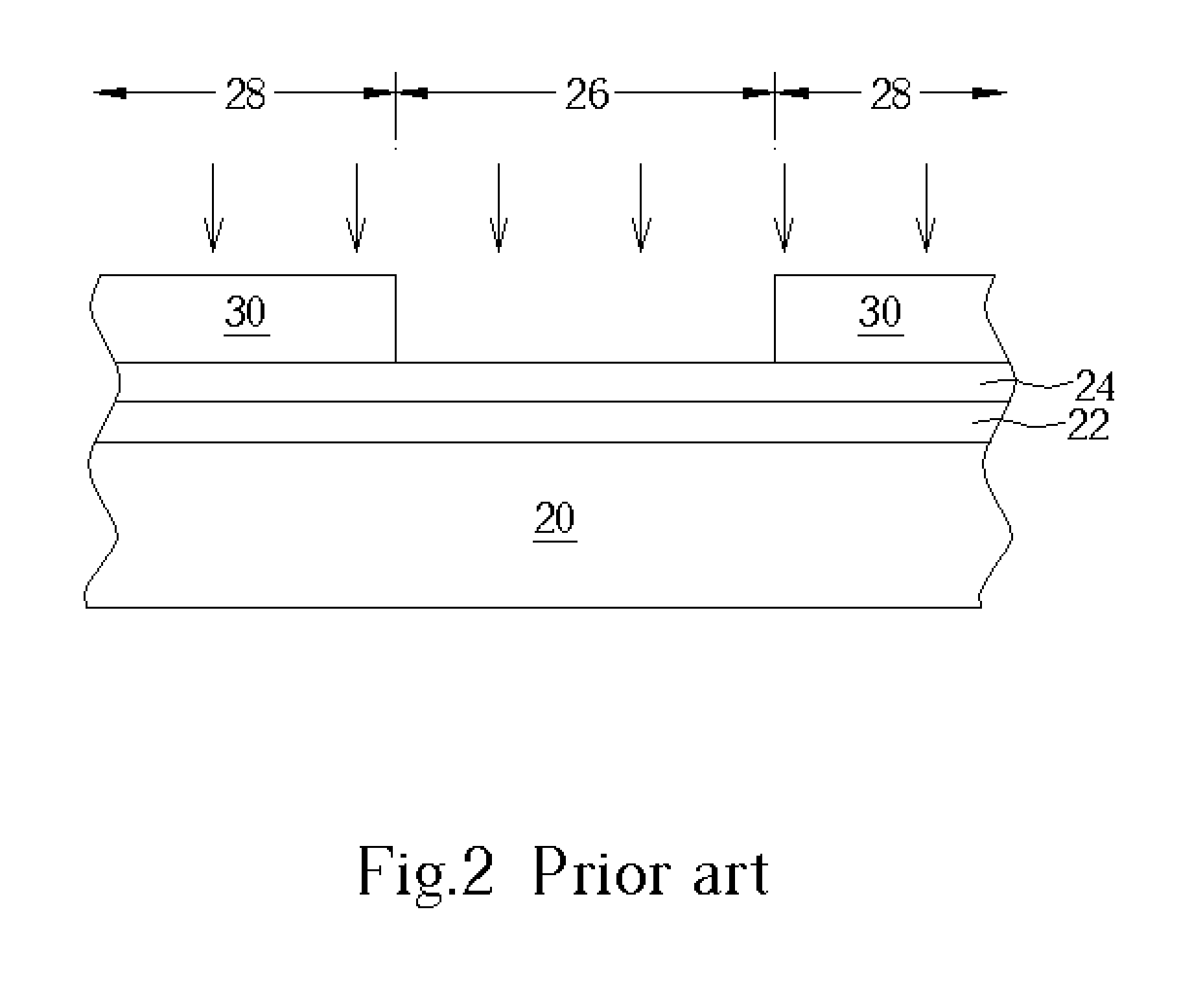Method of fabricating polysilicon film by excimer laser crystallization process
- Summary
- Abstract
- Description
- Claims
- Application Information
AI Technical Summary
Benefits of technology
Problems solved by technology
Method used
Image
Examples
first embodiment
[0017]Please refer to FIG. 4 to FIG. 7, which are schematic diagrams of a method of fabricating a polysilicon film by an excimer laser crystallization process according to the present invention. As shown in FIG. 4, a substrate 110 is first provided. The substrate 110 is defined with a first region 120 and a second region 130. Then, a buffer layer 112 is formed on the substrate 110 to prevent the impure materials from diffusing upward in latter processes and affecting the quality of the polysilicon film. After that, an amorphous silicon film 114 is formed on the buffer layer 112 and a mask layer 116 is formed on the amorphous silicon film 114. In the preferred embodiment of the present invention, the substrate 110 is a glass substrate. The buffer layer 112 is a silicon oxide layer or a multi-layer structure composed of a silicon oxide layer and a silicon nitride layer. The mask layer 116 is a single layer structure composed of a silicon oxide layer, a silicon nitride layer, a metal l...
second embodiment
[0023]Generally speaking, the present invention utilizes a heat-retaining capping layer to reduce the heat dissipation after the excimer laser irradiation is stopped. Thus, the grains can be grown in an environment with a relative high temperature, leading to increase the grain size. With the assistance of the long pulse duration laser, the present invention can increase the grain size to about 10 μm, which improves the quality of the latter formed low temperature polysilicon thin film transistors. In addition, in the case of forming the heat-retaining capping layer before the mask layer, which is disclosed in the present invention, since the mask layer does not contact with the amorphous silicon film or the polysilicon film directly, no pollution is concerned while the mask layer is mainly composed of a metal layer.
[0024]In contrast with the prior art method, the present invention can not only control the location of the grain boundary, but also improve the grain size in the polysi...
PUM
 Login to View More
Login to View More Abstract
Description
Claims
Application Information
 Login to View More
Login to View More - R&D
- Intellectual Property
- Life Sciences
- Materials
- Tech Scout
- Unparalleled Data Quality
- Higher Quality Content
- 60% Fewer Hallucinations
Browse by: Latest US Patents, China's latest patents, Technical Efficacy Thesaurus, Application Domain, Technology Topic, Popular Technical Reports.
© 2025 PatSnap. All rights reserved.Legal|Privacy policy|Modern Slavery Act Transparency Statement|Sitemap|About US| Contact US: help@patsnap.com



